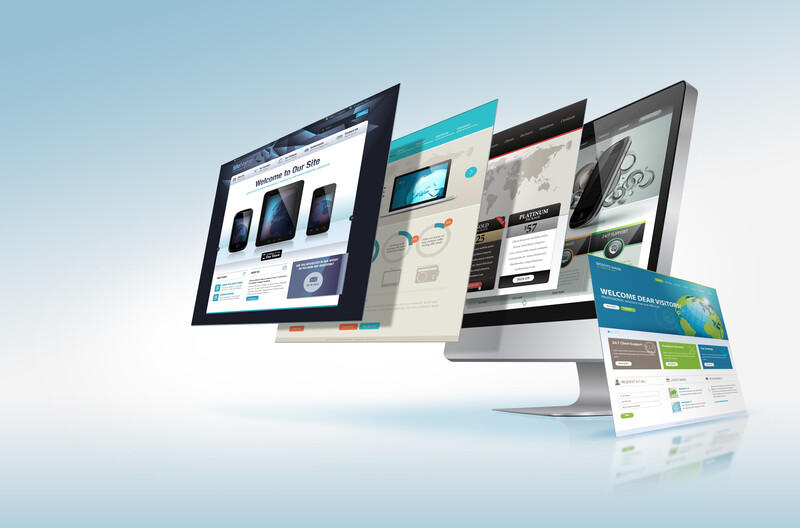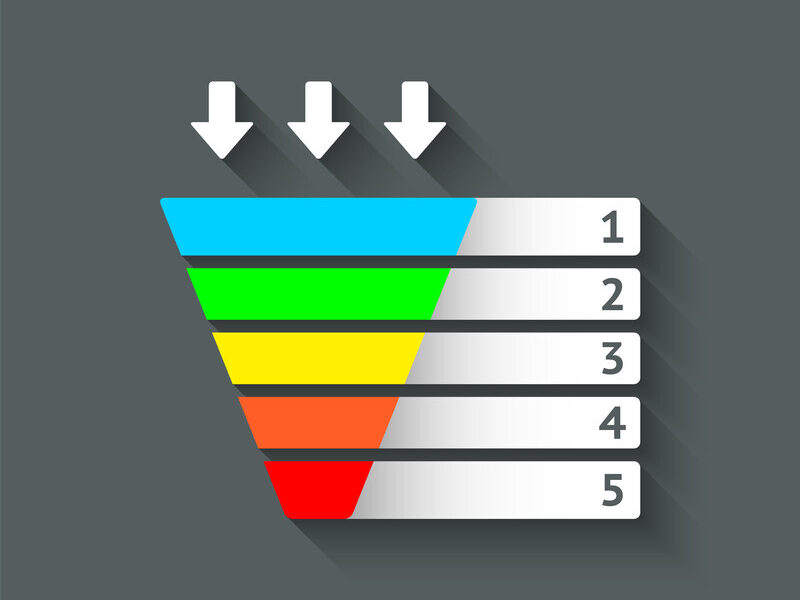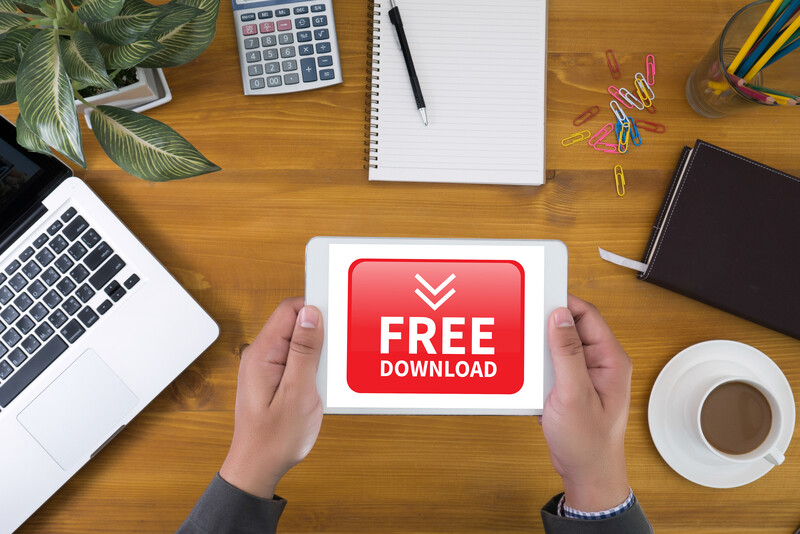In today’s fast-paced and competitive business environment, it’s crucial to have a solid understanding of the different types of sales funnels. By mastering the art of creating and optimizing sales funnels, you can effectively attract, engage, and convert prospects into loyal customers. In this comprehensive guide, we’ll explore the seven types of sales funnels and how they can help you grow your business.
To understand the importance of different types of funnels, let’s first delve into the concept of the value ladder from Russell Brunson’s Dotcom Secrets book.
The value ladder is a strategic marketing tool that helps businesses visualize their product offerings in a step-by-step, ascending order based on the value they provide to customers.
By offering increasingly valuable products or services at each step, you can create a seamless customer journey that encourages repeat business and customer loyalty.
In the following sections, we’ll discuss each of the seven types of sales funnels, their unique benefits, and how they can be used to create a well-rounded marketing strategy that drives business growth.
Type 1: The Tripwire Funnel
The tripwire funnel is designed to convert cold traffic into buyers by offering a low-cost, high-value product or service. Once a prospect has made an initial purchase, they are more likely to invest in higher-priced items in your value ladder.
The tripwire funnel consists of three main components: the lead magnet, the tripwire offer, and the core offer. The lead magnet is a free, valuable piece of content that attracts potential customers and captures their contact information. The tripwire offer is a low-priced, irresistible product or service that prospects can’t refuse. Finally, the core offer is your primary product or service, which is introduced after the tripwire offer.
To create a successful tripwire funnel, focus on providing exceptional value at each stage. The lead magnet should be relevant and valuable, the tripwire offer should be a no-brainer, and the core offer should meet the needs of your target audience.
Type 2: The Webinar Funnel
The webinar funnel is an excellent way to generate leads, educate prospects, and sell high-ticket products or services. Webinars allow you to connect with your audience on a personal level, establish your expertise, and deliver valuable information that solves their problems or improves their lives.
A typical webinar funnel includes a registration page, a thank you page, the live or pre-recorded webinar, and a sales page. The registration page captures the contact information of interested prospects, while the thank you page confirms their registration and provides additional information about the webinar. During the webinar, you can offer valuable insights, answer questions, and present your product or service as the solution to the audience’s problems. Finally, the sales page is designed to convert prospects into customers by showcasing the benefits of your offer and providing a clear call-to-action.
To optimize your webinar funnel, focus on delivering valuable content, engaging your audience, and addressing objections during the presentation. Additionally, use email marketing to nurture leads before and after the webinar to maximize conversions.
Type 3: The Product Launch Funnel
The product launch funnel is designed to create buzz, excitement, and anticipation for a new product or service. By leveraging the power of storytelling, social proof, and scarcity, you can drive demand and generate sales.
A successful product launch funnel includes four main components: the pre-launch content, the launch content, the open cart period, and the post-launch follow-up. The pre-launch content consists of valuable information and teasers that pique the interest of your target audience.
The launch content delivers in-depth information about the product or service and its benefits. During the open cart period, prospects can purchase the product or service at a special price or with exclusive bonuses. Finally, the post-launch follow-up includes customer testimonials, case studies, and additional promotional content to encourage sales.
To optimize your product launch funnel, focus on creating compelling content, leveraging social proof, and creating a sense of urgency. Additionally, use email marketing and retargeting campaigns to engage with prospects throughout the launch process.
Type 4: The Membership Funnel
The membership funnel is designed to attract, engage, and retain customers by offering ongoing value through exclusive content, resources, and community. A successful membership funnel can help you generate recurring revenue, increase customer lifetime value, and create a loyal customer base.
The membership funnel consists of a lead magnet, a sales page, and the membership site. The lead magnet is a valuable piece of content that attracts potential members and captures their contact information. The sales page showcases the benefits of your membership program and encourages prospects to join. Finally, the membership site is the platform where members can access exclusive content, resources, and community features.
To optimize your membership funnel, focus on delivering exceptional value, maintaining a consistent content schedule, and fostering an engaged community. Additionally, use email marketing to nurture leads and keep members informed about new content and updates.
Type 5: The High-Ticket Funnel
The high-ticket funnel is designed to sell high-priced products or services by building trust, credibility, and authority. By providing exceptional value and demonstrating your expertise, you can attract high-quality prospects and convert them into high-paying customers.
A typical high-ticket funnel includes a lead magnet, an application process, and a sales call. The lead magnet is a valuable piece of content that attracts potential clients and captures their contact information. The application process allows you to pre-qualify prospects based on their needs, budget, and commitment level. Finally, the sales call is an opportunity to establish a personal connection, address objections, and close the deal.
To create a successful high-ticket funnel, focus on providing exceptional value, building trust, and demonstrating your expertise. Additionally, use email marketing to nurture leads and prepare them for the sales call.
Type 6: The Lead Magnet Funnel
The lead magnet funnel is designed to attract and capture leads by offering valuable content in exchange for their contact information. By providing high-quality, relevant, and valuable content, you can build your email list and nurture prospects through your value ladder.
A typical lead magnet funnel includes a landing page, a thank you page, and an email follow-up sequence. The landing page is designed to showcase the benefits of your lead magnet and encourage prospects to opt-in. The thank you page confirms the opt-in and provides additional information about the lead magnet. Finally, the email follow-up sequence is designed to nurture leads, provide additional value, and introduce your products or services.
To optimize your lead magnet funnel, focus on creating high-quality, relevant, and valuable content that resonates with your target audience. Additionally, use email marketing to nurture leads and guide them through your value ladder.
Type 7: The Application Funnel
The application funnel is designed to attract high-quality prospects and pre-qualify them for your high-ticket products or services. By requiring prospects to complete an application, you can ensure that you’re only working with the most committed and qualified leads.
The application funnel consists of a landing page, an application form, and a follow-up process. The landing page showcases the benefits of your high-ticket product or service and encourages prospects to apply. The application form collects information about the prospect’s needs, goals, and commitment level. Finally, the follow-up process involves reviewing the applications, scheduling sales calls, and closing the deal.
To create a successful application funnel, focus on attracting high-quality prospects, providing an easy-to-complete application form, and following up promptly. Additionally, use email marketing to nurture leads and prepare them for the sales call.
How to Choose the Right Sales Funnel for Your Business
Now that you understand the seven types of sales funnels and their unique benefits, it’s time to choose the right sales funnel for your business. The first step is to identify your business goals and target audience. What are you trying to achieve? Who are you trying to reach?
Once you’ve established your goals and target audience, consider which type of sales funnel aligns with your business objectives and customer needs. For example, if you’re trying to generate leads, the lead magnet funnel may be the best option. If you’re launching a new product, the product launch funnel may be the most effective.
It’s also important to consider your budget, resources, and timeline when choosing a sales funnel. Some funnels require more time and investment than others, so make sure you choose a funnel that you can realistically execute and optimize.
Tips for Optimizing Your Chosen Sales Funnel
Once you’ve chosen a sales funnel, it’s important to optimize it for maximum effectiveness. Here are some tips to help you optimize your chosen sales funnel:
- Focus on providing exceptional value at each stage of the funnel.
- Use compelling copywriting and visuals to capture attention and drive action.
- Use A/B testing to optimize your funnel elements and improve conversion rates.
- Use email marketing to nurture leads and guide them through your value ladder.
- Incorporate social proof, testimonials, and case studies to build trust and credibility.
- Continuously track and analyze your funnel metrics to identify areas for improvement.
By continuously optimizing your sales funnel, you can maximize your ROI and drive business growth.
Conclusion: Boosting Business Growth with the Right Sales Funnel
Remember to focus on providing exceptional value, building trust and credibility, and nurturing leads through your value ladder. By implementing these strategies and continuously optimizing your funnel, you can boost your business growth and achieve your goals.
Review of the 7 types of funnels:
- The tripwire funnel
- The webinar funnel
- The product launch funnel
- The membership funnel
- The high-ticket funnel
- The lead magnet funnel
- The application funnel
Each of these funnels has its unique benefits, and choosing the right one for your business depends on your goals, target audience, and budget. By mastering the art of sales funnels, you can create a well-rounded marketing strategy that drives business growth and sets you apart from the competition.





